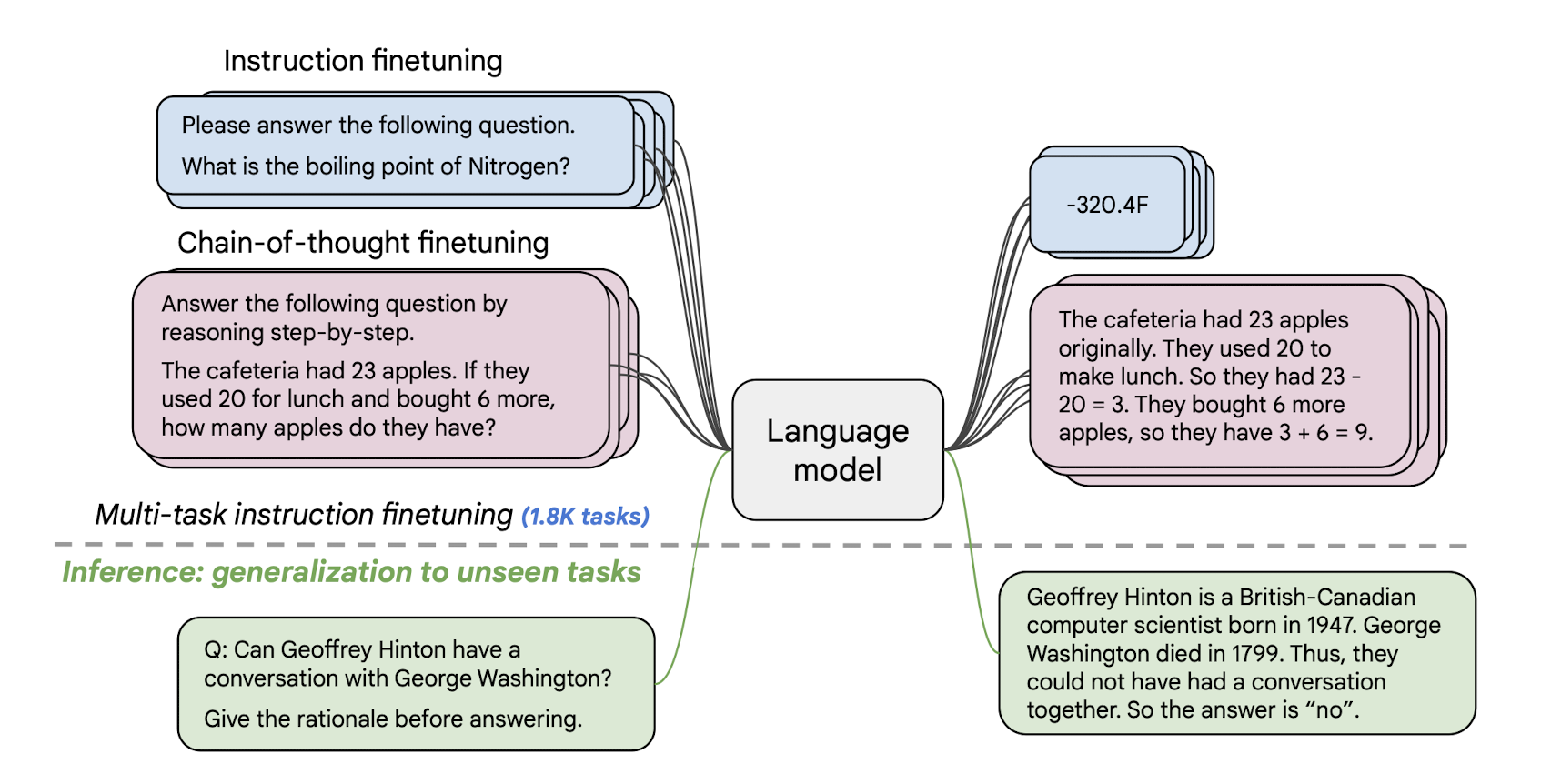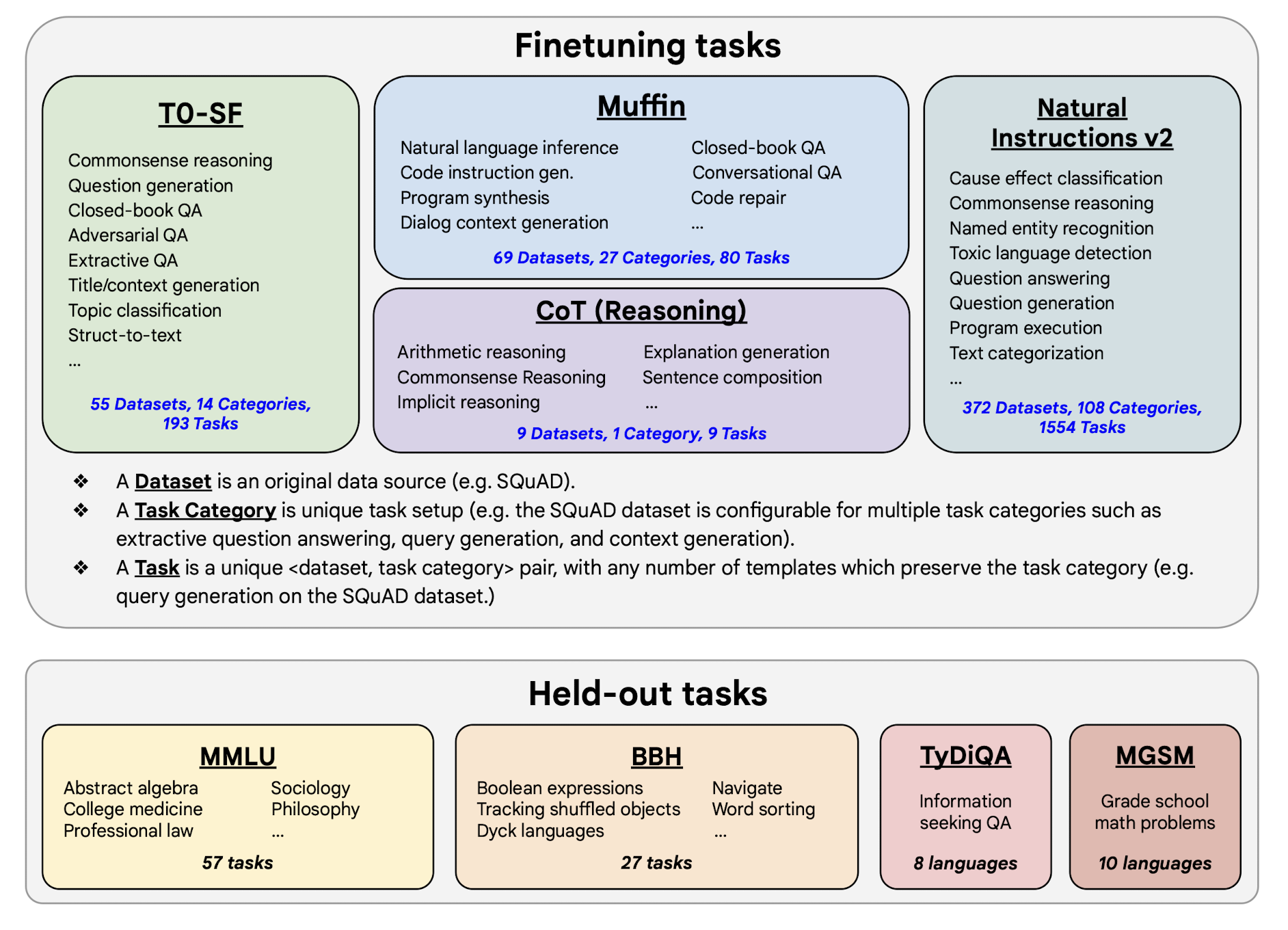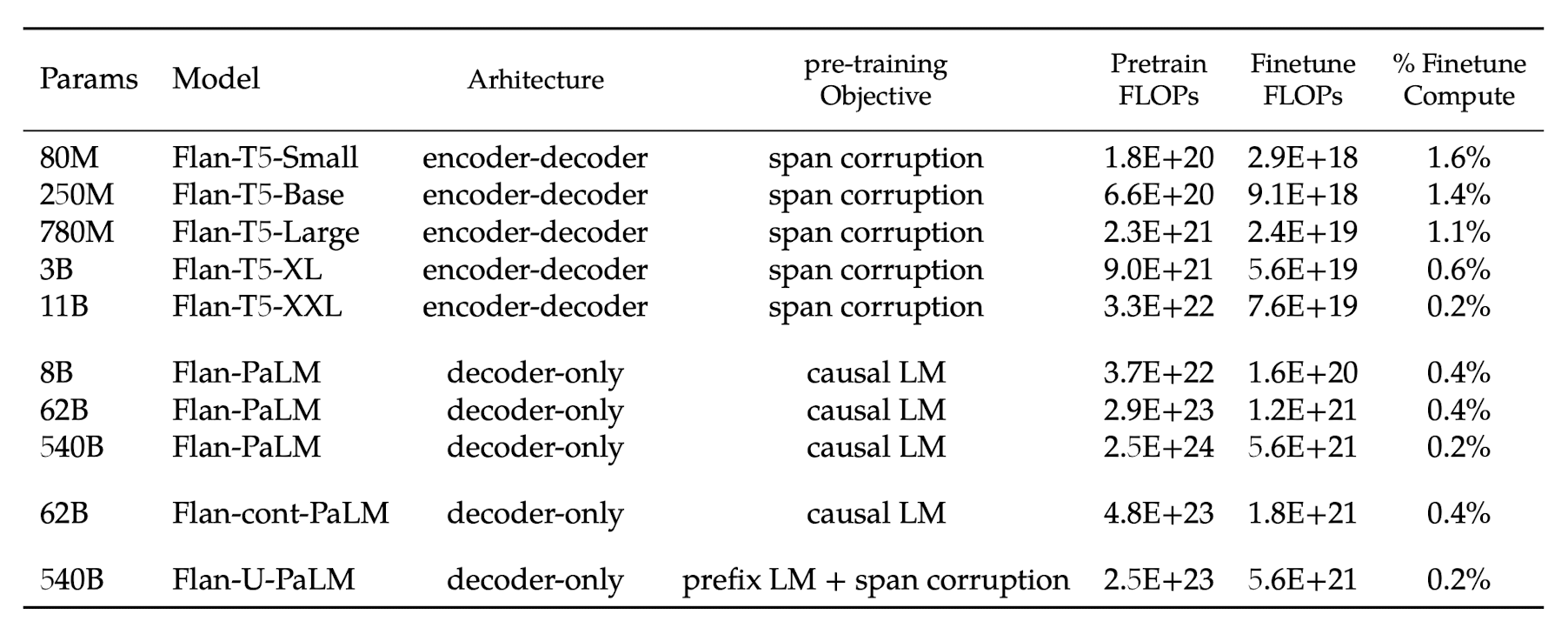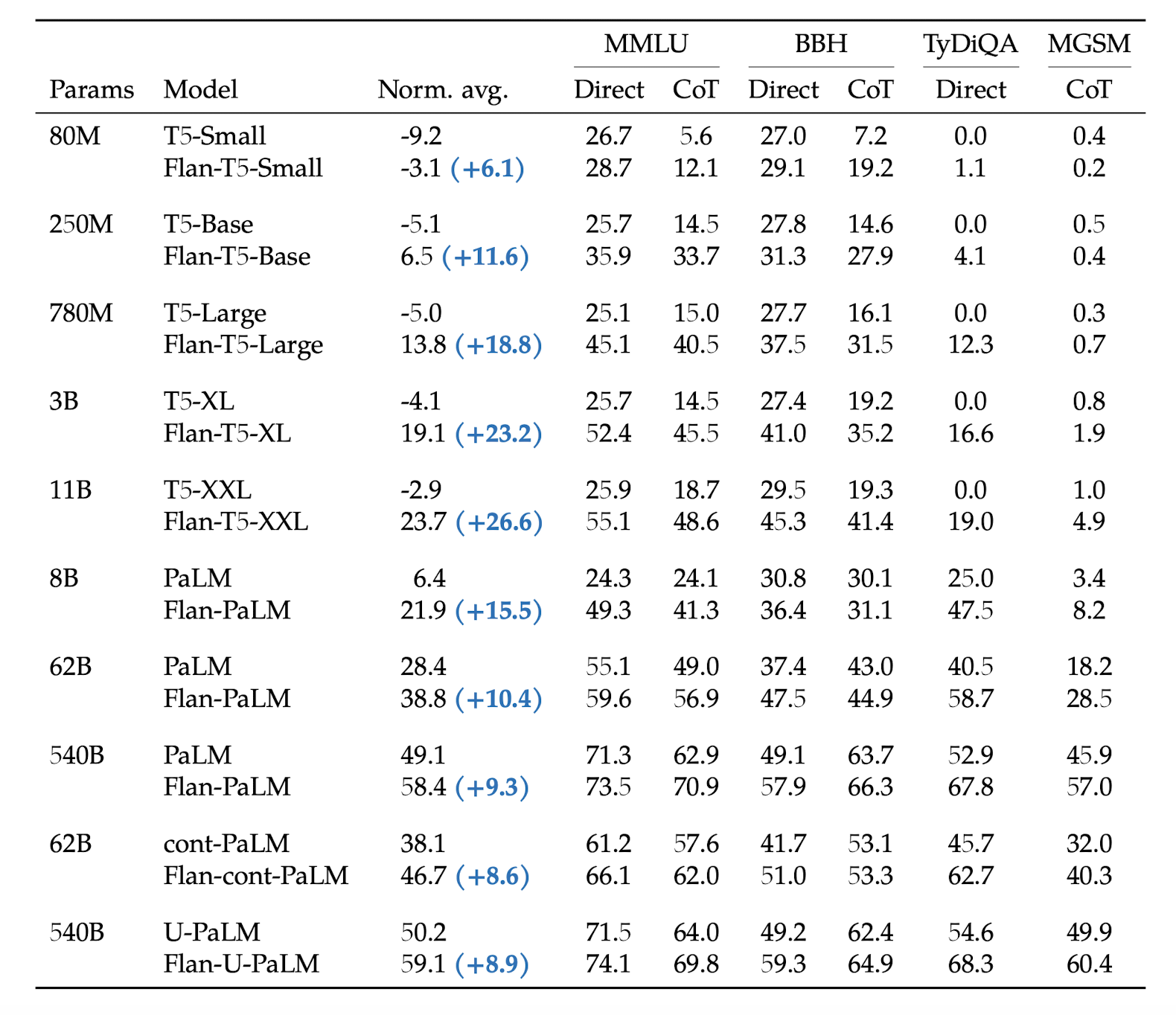Flan Models
Introduction
- In “Scaling Instruction-Finetuned Language Models”, researchers propose an LLM fine-tuning strategy that focus on using dataset in form of instructions with other tricks like (1) scaling the number of tasks, (2) scaling the model size, and (3) finetuning on chain-of-thought data.
- The resulting models were called
Flan-{source_model}like Flan-T5 and Flan-PaLM which showcase enhanced performance when compared with their namesakes.

Note
All Flan models like Flan-T5 are only finetuned and not trained from scratch.
Dataset
- The Flan models were finetuned on 1836 tasks. Here are some definitions,
- “Dataset” is an data source (ex: SQuAD),
- “Task category” is a unique task setup like query generation or question answering.
- “Task” is unique combinations of
<dataset, task category>. This is possible because a single dataset can be used for different task categrory (ex: SQuAD for query generation or QA or context generation).
- Combining 473 datasets and 146 task category we end up with 1836 different tasks.

Finetuning process
- Instruction finetuning was performed for T5, PaLM and U-PaLM, where the model sizes span from Flan-T5-small (80M parameters), to PaLM and U-PaLM (540B parameters).
- Same training procedure was used for each model except for a few hyperparameters like learning rate, batch size, dropout, and finetuning steps. Constant learning rate schedule was used to finetune using the Adafactor optimizer.
- Notably, the amount of compute used for finetuning is only a small fraction relative to the training compute, as shown in the table below.

Results

Code
- The code of inference and finetuning Flan models are very similar to the original models. Below we will show inference code for Flan-T5, which is similar to the T5 inference.
- Similarly, if you want to further finetune Flan-T5 for your use case, you can refer T5 finetuning code. If you are using HuggingFace, then all you need to do is replace the model name to
google/flan-t5-{size}, where size could besmall,base,large,xlandxxl.
Flan-T5 Inference
- The following code is referenced from the HuggingFace Flan-T5 page [2]
1 2 3 4 5 6 7 8 9 10 11 | |
References
[1] Scaling Instruction-Finetuned Language Models - Paper